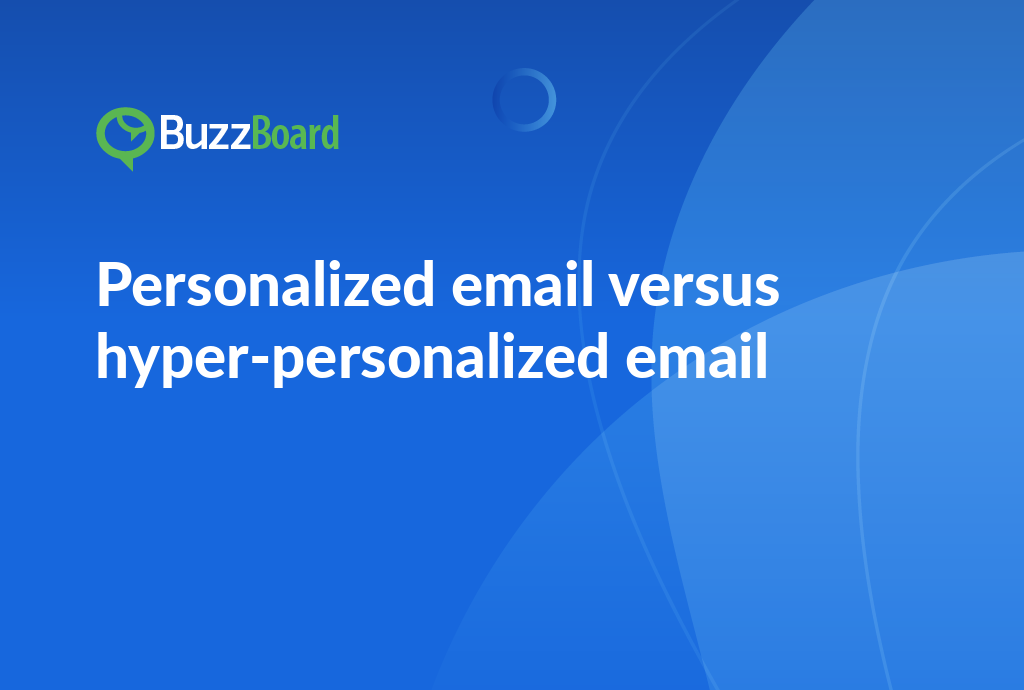What are geo-targeted digital ads for local businesses? Geo-targeted digital ads are a type of online advertising that allows local businesses to target specific geographic locations, such as cities, zip codes, or even specific addresses, to reach potential customers who are most likely to visit their physical store or use their services. By targeting specific locations, local businesses can increase brand awareness, drive foot traffic, and boost sales. In this article, we’ll explore the benefits and best practices for implementing geo-targeted digital ads for local businesses, including how to set up and optimize campaigns for maximum ROI.
The Importance and Benefits of Geo-Targeted Digital Ads for Local Business
In today’s competitive market, employing geographic targeting techniques for crafting digital ads for local businesses is a fundamental tactic in local business marketing. This geo-targeted digital advertising allows local businesses to boost the relevance, efficacy, and return on investment of their promotional strategies.
Digital ads aimed at specific geographical locations provide multiple benefits. Firstly, they help save resources by focusing solely on regions you’ve defined as your target audience’s habitat. With the market narrowed down to a specific location, unnecessary advertising expenditure is avoided.
One of the most significant advantages of targeted digital advertising for local businesses is the ability to deliver highly personalized messages to customers. By leveraging geo-targeting capabilities, businesses can serve ads that are tailored to a customer’s current location, increasing the likelihood of engagement and conversion. For instance, a coffee shop in downtown Los Angeles can target ads to commuters passing by their store, offering a special promotion to entice them to stop in for a morning pick-me-up. This level of personalization not only resonates with customers but also helps to build brand loyalty and trust.
Geo-targeted digital ads also provide local businesses with unparalleled insights into the effectiveness of their advertising campaigns. With modern tracking and analytics tools available on digital platforms, businesses can easily monitor the performance of their ads across different regions, cities, or even zip codes. This granular level of data analysis enables businesses to identify which areas are driving the most conversions, and adjust their strategies accordingly. For example, a local boutique may discover that their ads are performing exceptionally well in a particular neighborhood, prompting them to allocate more budget to that area.
Moreover, geo-targeted digital advertising allows local businesses to optimize their campaigns in real-time, making adjustments to ad creative, targeting, and budget allocation as needed. This agility is particularly valuable for businesses with limited marketing resources, as it enables them to maximize their return on investment (ROI) and minimize waste.
Embracing geo-targeted digital advertising formats is a crucial strategy for local businesses seeking to engage with customers and drive conversions. As salespeople at digital marketing agencies, understanding the importance of this strategy can open up new opportunities for steady growth and success for your clients. By leveraging the power of geo-targeting, local businesses can build strong connections with their target audience, drive foot traffic to their physical locations, and ultimately, achieve their marketing goals.
Understanding How Geographic Targeting Improves Local Business Marketing
Understanding the significance of geographic targeting is crucial to enhance local business marketing, as it allows businesses to tailor their digital advertising efforts to specific geographic areas, increasing the likelihood of reaching and engaging with their target audience. To comprehend the concept of geographic targeting, it is essential to grasp how digital ad placement for local businesses functions.
At its core, geographic targeting, also known as geo-targeting, involves tailoring content or advertisements based on consumers’ geographic locations. This can include targeting specific countries, regions, cities, or even neighborhoods. By leveraging this local business marketing technique, businesses can hone their ad targeting, aligning perfectly with their customer profile, thereby elevating conversion chances.
In today’s digital age, the concept of “local” has undergone a significant transformation. The rise of the internet has dramatically altered the way businesses approach advertising, making traditional tactics less effective. Digital advertising has enabled businesses to reach prospects where they live, work, or relax, allowing for a more targeted and personalized approach.
Geographic targeting lends an additional layer of personalization to digital ads for local businesses, stimulating cost-efficiency, relevancy, and ultimately, improving local business marketing outcomes. By utilizing geographic targeting in digital advertising, businesses can pinpoint their desired audience, increasing the likelihood of conversion and driving meaningful results.
The benefits of geographic targeting are numerous. For instance, it allows businesses to:
- Reach a targeted audience: By targeting specific geographic areas, businesses can ensure that their ads are seen by people who are most likely to be interested in their products or services.
- Increase conversion rates: By tailoring ads to specific geographic areas, businesses can increase the likelihood of conversion, as the ads are more relevant to the target audience.
- Improve cost-efficiency: Geographic targeting enables businesses to allocate their advertising budget more effectively, reducing waste and increasing the return on investment.
- Enhance customer experience: By providing relevant and personalized ads, businesses can enhance the customer experience, building trust and loyalty with their target audience.
Geographic targeting is a powerful tool for local businesses looking to elevate their marketing efforts. By understanding how digital ad placement for local businesses functions and leveraging geographic targeting, businesses can create targeted and personalized ads that resonate with their target audience, driving meaningful results and improving their overall marketing outcomes.
Effective Strategies for Implementing Digital Advertising for Local Business
The world of digital advertising presents a vast array of opportunities for local businesses to reach, engage, and convert their target audience. One of the most significant advantages of digital advertising for local businesses is its ability to target specific geographic areas, allowing for a highly targeted and efficient marketing approach. By leveraging geographic targeting, local businesses can promote their products or services to potential customers who are most likely to be interested in their offerings, thereby maximizing their return on investment.
In addition to geographic targeting, digital advertising for local businesses offers a range of other benefits that can help drive business growth. For instance, digital platforms provide local businesses with the ability to reach customers at the moment they are most receptive to their message. This can be particularly effective for businesses that offer time-sensitive promotions or services, such as restaurants, bars, or event venues.
Another significant advantage of digital advertising for local businesses is its ability to foster a sense of community. By integrating their ads into local customers’ daily online activities, businesses can build robust relationships with their target audience, instilling trust and loyalty. This can be particularly effective for local businesses that rely on word-of-mouth referrals or repeat customers.
Furthermore, digital advertising for local businesses offers a range of metrics and analytics tools that allow businesses to track the effectiveness of their campaigns in real-time. This provides valuable insights that can help businesses refine their marketing strategy, optimize their ad spend, and make data-driven decisions.
In addition to its technical benefits, digital advertising for local businesses also offers a range of creative opportunities. For instance, local businesses can use digital advertising to share their story, showcase their products or services, and highlight their unique value proposition. This can help businesses differentiate themselves from larger competitors and establish a strong brand identity.
Digital advertising for local businesses offers a range of benefits that can help drive business growth, foster customer engagement, and enhance brand reputation. By leveraging geographic targeting, fostering a sense of community, and utilizing metrics and analytics tools, local businesses can create a powerful marketing strategy that drives results.
Examples of Local Businesses Successfully Utilizing Geo-Targeted Digital Ads
Geo-targeted digital ads have emerged as a powerful tool for local businesses, providing remarkable results and a substantial return on investment. By incorporating geographic targeting in digital advertising, businesses can focus their marketing efforts on a specific location, ensuring they reach potential customers in the area.
Take for example, a local restaurant in Chicago that garnered impressive success using geo-targeted digital ads to engage customers. By exploiting Facebook’s targeted advertising feature, the restaurant directed ads to consumers within a certain radius. The result? A stark 17% increase in foot traffic during lunch hours, tangibly demonstrating the capabilities of targeted digital advertising for local businesses.
Similarly, a small boutique fitness studio in Seattle experienced a 20% surge in new memberships over two months, thanks to geo-targeted digital ads on Google. Focusing their marketing efforts in their immediate surroundings allowed them to tap into potential members in their vicinity, proving the effectiveness of digital ads for local businesses.
These examples not only underscore the power of geo-targeting but also underline the significant shift of local business marketing towards digital channels. With more consumers turning to the internet to find local services, a well-positioned, geo-targeted digital ad can make a significant difference.
The Challenges and Solutions in Implementing Geo-Targeted Digital Ads for Local Business
Implementing digital advertisements for local businesses presents a unique set of challenges, and one of the most significant hurdles is perfecting geographic targeting. For small local businesses, reaching the right audience in their immediate vicinity is crucial for driving foot traffic, generating leads, and ultimately, increasing sales. Any missteps in targeting can result in wasted ad spend, missed opportunities, and a diminished return on investment.
One of the most prevalent issues is the lack of accuracy in geo-targeting capabilities. Not all digital ad platforms provide precise targeting, and even when they do, advertisers may find it challenging to segment their audience as required. This can lead to ads being displayed to the wrong audience, resulting in a low conversion rate and a poor return on investment.
Another significant obstacle is local market saturation. In areas with numerous businesses deploying digital ads, it can be difficult for your message to break through the crowd. This is particularly challenging for small local businesses, which may not have the same level of resources or budget as larger competitors. Additionally, a saturated market often translates to higher ad costs, making it even more challenging for businesses to achieve their marketing goals.
However, these challenges do not indicate a deadlock. There are solutions to streamline and optimize your geo-targeted digital ad campaigns, allowing you to reach your target audience with precision and effectiveness.
One solution is to invest in an advanced geographic targeting ad platform. These platforms use advanced algorithms and data to provide precise targeting, reducing errors and allowing businesses to pinpoint their desired audience accurately. By leveraging these platforms, businesses can ensure that their ads are displayed to the right audience, increasing the chances of conversion and driving real results.
In a saturated market, it becomes essential to personalize content. Leveraging big data and analytics, businesses can customize their message, increasing the chances of grabbing the attention of their target customers. This can be achieved by using data to segment their audience, creating targeted ads that speak directly to the needs and interests of their customers.
Ongoing monitoring and testing remain critical components of a successful geo-targeted digital ad campaign. By constantly evaluating campaign performance, businesses can make necessary adjustments to ensure maximum reach and effectiveness. This may involve testing different targeting options, ad creatives, and bidding strategies to optimize performance and drive the best possible results.
In addition to these strategies, businesses can also consider using location-based targeting options, such as proximity targeting, to reach customers who are physically close to their business. This can be particularly effective for businesses with physical locations, such as restaurants, retail stores, and service providers.
Another important consideration is the importance of mobile targeting. With the majority of consumers using their mobile devices to access the internet, it is essential to target mobile devices specifically. This can be achieved by using mobile-specific targeting options, such as mobile app targeting, to reach customers who are using specific apps or devices.
Finally, businesses should also consider the importance of attribution modeling. Attribution modeling allows businesses to track the effectiveness of their ad campaigns and attribute conversions to specific ads, ad groups, or targeting options. This can help businesses to optimize their campaigns and make data-driven decisions about where to allocate their marketing budget.
Implementing digital advertisements for local businesses presents unique challenges, but by leveraging advanced geographic targeting ad platforms, personalizing content, and ongoing monitoring and testing, businesses can optimize their campaigns and drive real results. By considering location-based targeting options, mobile targeting, and attribution modeling, businesses can ensure that their ads are displayed to the right audience, increasing the chances of conversion and driving real results.
Conclusion
In conclusion, geo-targeted digital ads offer a powerful way for local businesses to reach and engage with their target audience, driving foot traffic and sales to their physical locations. By targeting specific geographic locations, local businesses can increase brand awareness, build customer loyalty, and outshine their competitors.
To get the most out of geo-targeted digital ads, local businesses should focus on setting clear goals and objectives, selecting the right targeting options, and optimizing their campaigns regularly. By leveraging the benefits of geo-targeting, local businesses can create a strong online presence, attract new customers, and drive growth.
Whether you’re a small mom-and-pop shop or a large chain of stores, geo-targeted digital ads can help you reach the right people at the right time and drive real results for your business. So why wait? Start targeting your local audience today and watch your business thrive!









